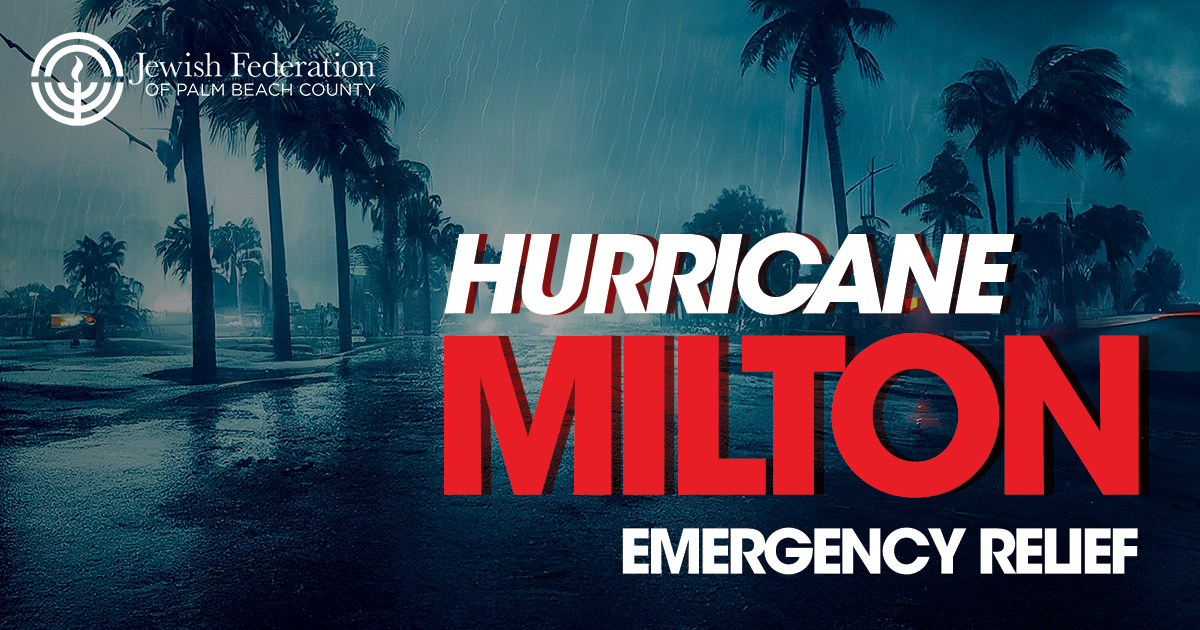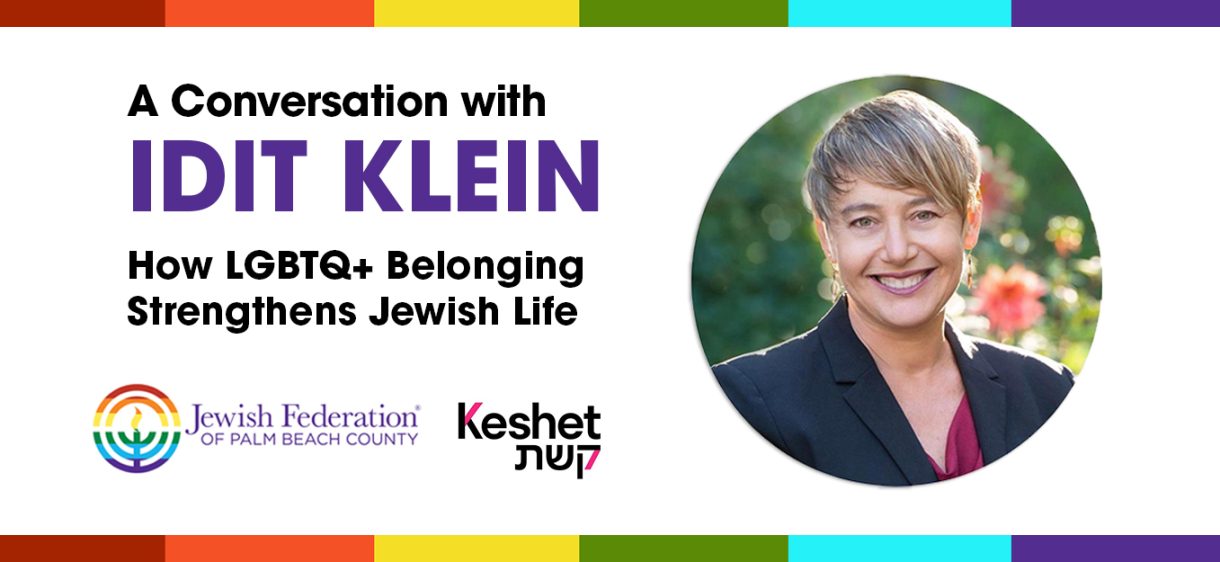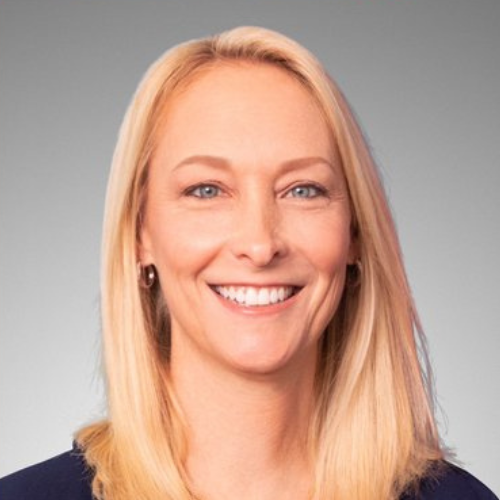ELP Budapest Blog
Federation’s Emerging Leadership Program Alumni Mission to Budapest
SEPTEMBER 15-21, 2022
This blog was written from the personal experiences of Lindsay Hirsch, Senior Director, Leadership Development
spce
INTRODUCTION
When this journey first began in 2018, it wouldn’t have been in my thought process that a Global Pandemic or several years would pass before landing in Europe. During my flight, I decided to re-read the curriculum based on our mifgash (encounter) between young Europeans, Israelis and Americans. This is truly unique, based on a triangular relationship between three vastly different, yet interconnected communities (Palm Beach, TZAHAR [Tzfat, Hatzor HaGlilit and Rosh Pina], and Budapest). A Passion for a People by Avrham Infeld and Clare Goldwater set the stage for our shared learning. Before landing in Budapest, I made a stop in Vienna. I read Avrham’s book several times; however, this time, I recognized his journey began with a JFNA (Jewish Federations of North America) conference in Vienna. For me, it was both fitting and symbolic for a variety of reasons, to spend a few days in Vienna prior to the mifgash beginning. Vienna is opulent, while Budapest is a mix of both dilapidated lavish buildings and life growing in the midst of a government that mixes differently with its people. This journey, this learning experience, was more of a mission of understanding by taking in each of these three communities while seeing daily life through a different perspective. We cannot be part of a global Jewish community without a full understanding of where our counterparts live and then communicating why and how we plan to make positive changes for our shared future.
Our mission is taking place on the PEST side of Budapest (the eastern, mostly flat part of Budapest, Hungary, comprising about two-thirds of the city’s territory). Our hotel looked directly upon the Rumbach Synagogue. You wouldn’t know until you look up to see the magnificent Magen Adom in the windows. Over the next few days, we joined together for deep conversations on Jewish lifestyle and then lead in Hungary, Israel and America. We explored Jewish values that should be universal, yet aren’t, and immense growth possibilities to strengthen our community. We must all understand that we have a shared religion; but to make it a shared peoplehood, it takes more than being Jewish. Discovering our similarities and embracing our differences is the only way for our triangular relationship to move forward.
I began my time here the day before the mission officially kicked off, walking the city; entering alleyways I would have never considered. They were abandoned and looked inhabitable. Yet, the enclosed square was where the center of Jewish life had previously thrived, and today, does not. You could see where the Chuppah (wedding canopy) would have permanently been located as well as the manner in which European Jewish life existed pre-Holocaust. The Ghetto wall still stands, and now there is a plaque, which reads: “You shall tell your son…” (Exodus 13:8) with tiny pebbles on top as a memory to those no longer with us. There were hundreds of pebbles. It was abundantly clear that despite the beauty of Vienna, they had erased Jewish life, where Budapest has preserved it, even if it is off the traditional path. Today, Orthodox Jews walk freely in Budapest, there are kosher restaurants and all with no armed guards. Vienna had two armed guards at the two Jewish sites. Otherwise, it was as if the “Judisches” were gone. Erased. Budapest is standing her ground and thriving, despite the visible battles like the swastika directly across the street from an Orthodox shul or the unseen, unspoken antisemitism as we walked the streets and learned about meeting with passionate young leaders. As you read more, you’ll begin to see why Budapest is so important to Jewish Palm Beach.
spce
DAY 1 | THURSDAY, SEPTEMBER 15
As the American and Israel young leaders first met, we came together to learn about the history of Hungary at Heroes Square. We began by exploring who we are, why shared learning and experiences are key, and what we are trying to accomplish together to better our future. We began this shared journey understanding global Jewry and the lens through which we view our reality. Setting the framework for the next seven days was critical in understanding why we were in Budapest and the importance of the new partnership for Jewish Federation of Palm Beach County. Leaving the conference center in pouring raining, soaking everyone through their clothes, gave a moment of levity and comradery. Addie, an American ELP participant opened her shawl as wide as possible and fit five Israelis under her “tent” to provide shelter and friendship. It was a beautiful moment amidst the rain, offering comfort to a cold and tired group who traveled across the world to come together. You could see in that unspoken moment kindness that the mifgash had already started. We officially kicked off the mission with an opening dinner where we heard from the Kerryn Lehman and Patrick Nicholas (American Chairs of the mission), Michael Hoffman (President and CEO of Jewish Federation), Susan Shulman Pertnoy (Board Chair of Jewish Federation of Palm Beach County), and Mik Amit Saada (Israeli Chair of the mission) in gratitude of this momentous occasion for the first ever mission to our new sister city of Budapest.
To begin this journey, it was key to hear from the three lenses of this mission. Beth Wayne shared her story of conversion to Judaism regarding her current vast involvement and vision for the future. It’s always remarkable for Jews around the world to hear a story of choice verses heritage and obligation. From Israel we heard from Reut Shubi and her reasons for wanting to better understand global Jewry from her perspective living and working in our sister cities in Tzahar. To begin the conversation with our Hungarian counterparts, we met with the director of Camp Szarvas. The Szarvas Fellowship program provides exceptional high school student leaders with the opportunity of a lifetime. At Camp Szarvas, the Fellows have the opportunity to meet and interact with a diverse group of peers from Jewish communities representing more than 25 countries, collectively learning the many different ways Jews around the world live and embrace their culture. Camp Szarvas is a place that nurtures exploration, leadership and Jewish identity building. It is at the forefront of what it means to engage and experience what global Jewish peoplehood is all about. As we moved along our journey in Budapest, we learned how instrumental Szarvas is in the development of Hungarian leaders and activists. There are very few leaders in Hungary today who have not been part of the JDC Szarvas experience or part of a multi-generational family experience through this moving and developmental program. It is as much a part of the Hungarian ethos as it to individual character. The night ended when one of the Israeli leaders, Ori Lev, came up to me and said, “I thought my English would be a problem. I understand everything with my heart.”
spce
DAY 2 | FRIDAY, SEPTEMBER 16
 Our first full day together. We began on foot for the Jewish Quarter, where we had a private entrance into the Dohany Synagogue Complex, followed by the Kazcinsky Synagogue, Carl Lutz Memorial and the Rumbach Synagogue. Seeing Hungary through the lens of pre-war Jewish life, post Holocaust and today was profoundly grappling. There are those who still have no idea they are Jewish. No existence to be spoken of, and yet, the juxtaposition of others who hold on so tightly to the past that they are pushing modern Jews away. All this based in the grasp of a society that is monitored and funded heavily by the Hungarian government. We began by walking into the Dohany Synagogue; also known as the Great Synagogue. Built in 1854, it is the largest synagogue in Europe, seats 3,000 people and is the center of Neolog Judaism. Hundreds of tourists, of all faiths, visit this building daily. It was overwhelming. Understanding the life of the 168-year-old walls, art, and existence that its congregation had filled with Hungarian Jews for nearly two hundred years was beautiful and complicated. Our Educator-in-Residence framed the world of Hungarian Jewry and the life many religious Jews lead today in the variety of religious institutions. Understanding history is the only way to truly process present-day Hungarian Judaism. From history to present day, we made our way to the Lauder Jewish Day School, where we sang Kabbalat Shabbat with 5-year-olds. We sang songs familiar to all three sides like bim bam and shared Shabbat blessings with dancing and lots of smiles. The children wanted us to participate and not be bystanders. Immediately, the Israeli leaders grabbed scarves and wrapped them around their heads like the children. They modeled what they wanted us to do, and within moments, we were all singing together. The group quickly moved inside to interact with teenagers attending the same school. In the 2015 HVG ranking of alternative high schools across Hungary, the Lauder School scored top place, which was abundantly clear when we spoke to students. Both Jewish and non-Jewish students make the choice to study at Lauder. Iltdit is an academic institution that fosters trust, growth, warmth and an environment where students can find their passion. Each leader had an opportunity to be paired with students who gave tours of their favorite parts of the school. In addition to academics, there is a nature trail, cooking, fine art, technology, and a vast learning environment.
Our first full day together. We began on foot for the Jewish Quarter, where we had a private entrance into the Dohany Synagogue Complex, followed by the Kazcinsky Synagogue, Carl Lutz Memorial and the Rumbach Synagogue. Seeing Hungary through the lens of pre-war Jewish life, post Holocaust and today was profoundly grappling. There are those who still have no idea they are Jewish. No existence to be spoken of, and yet, the juxtaposition of others who hold on so tightly to the past that they are pushing modern Jews away. All this based in the grasp of a society that is monitored and funded heavily by the Hungarian government. We began by walking into the Dohany Synagogue; also known as the Great Synagogue. Built in 1854, it is the largest synagogue in Europe, seats 3,000 people and is the center of Neolog Judaism. Hundreds of tourists, of all faiths, visit this building daily. It was overwhelming. Understanding the life of the 168-year-old walls, art, and existence that its congregation had filled with Hungarian Jews for nearly two hundred years was beautiful and complicated. Our Educator-in-Residence framed the world of Hungarian Jewry and the life many religious Jews lead today in the variety of religious institutions. Understanding history is the only way to truly process present-day Hungarian Judaism. From history to present day, we made our way to the Lauder Jewish Day School, where we sang Kabbalat Shabbat with 5-year-olds. We sang songs familiar to all three sides like bim bam and shared Shabbat blessings with dancing and lots of smiles. The children wanted us to participate and not be bystanders. Immediately, the Israeli leaders grabbed scarves and wrapped them around their heads like the children. They modeled what they wanted us to do, and within moments, we were all singing together. The group quickly moved inside to interact with teenagers attending the same school. In the 2015 HVG ranking of alternative high schools across Hungary, the Lauder School scored top place, which was abundantly clear when we spoke to students. Both Jewish and non-Jewish students make the choice to study at Lauder. Iltdit is an academic institution that fosters trust, growth, warmth and an environment where students can find their passion. Each leader had an opportunity to be paired with students who gave tours of their favorite parts of the school. In addition to academics, there is a nature trail, cooking, fine art, technology, and a vast learning environment.
Many students who come out of the Lauder School have goals to come back as teachers. It is the greatest testament to the education and support students receive in an otherwise harsh Jewish community. The school inadvertently teaches tolerance and understanding. Every corner of the school is filled with hope for the future of Hungarian Jewish life. While at the school, we did a shared learning between the American and Israelis on setting a framework for our shared Jewish values. Interestingly, there was one value that each participant agreed upon. They, Israelis and Americans alike, selected the Jewish value: Derech Eretz, which literally means “the way of the land” and emphasizes the ethical and responsible way to live. There are rules and ideas within Judaism that teaches common decency and manners. It is not surprising that emerging leaders embrace this as a core value. In leadership, the major attributes of an ethical leader are character and integrity, ethical awareness and a tie to a shared community and peoplehood. It was the moment these young leaders began to become one cohesive group and a fitting activity to set the stage before preparing for Shabbat.
Shabbat in Budapest was full of symbolism, European ideals, history and divergence. Walking to the Dohany Synagogue without our phones and in separate groups, since men and women must pray in different sections, was out of the ordinary for many of us. The traditional experience was filled with beauty and conflict. One of our American leaders was asked, “are you Jewish?” while some of the Israeli leaders were asked to leave because they “weren’t praying” in a manner that was acceptable. The tradition of this 168-year-old synagogue was complex and led to further questions about Jewish life in Hungary. Many of the orthodox leaders prayed in an even more traditional shul. Reform Judaism in Hungary is by far the least popular and typically doesn’t even have enough to consider a minyan on a weekly basis. The experience at Dohany gave all the leaders much to consider over our dinner with Moishe House residents who gave a vastly different lens to see Hungarian Jewish life through.
Moishe House is an international non-profit organization made up of a collection of homes throughout the world that serve as hubs for the young-adult Jewish community. It provides a rent subsidy and program budget to Moishe House residents who then use their home to create their ideal Jewish communal space. We were joined by four women who are actively involved in Moishe House as well as other NPOs in Hungary. They each shared their experiences of bringing Jewish life to Hungary through cultural experiences, exploration of Jewish holidays and meeting like-minded individuals in a place where it is not the norm. The Moishe House residents make Judaism accessible through a different mindset than typical traditional Jewish institutions. The balance between the traditional experience at Dohany and the less traditional opportunities at Moishe House allowed for conversation around what Jewish life in Hungary looks like for those exploring their own identity and personal connection to Judaism.
spce
DAY 3 | SATURDAY, SEPTEMBER 17
 Shabbat morning learning was all about growth as a leader. Participants were encouraged to embrace new perspectives they encountered. One example was learning with Rabbinical student Adam Zeitler. Adam shared his journey as a Tarbut Fellow and how the weekly Torah portion was interwoven so deeply with American history, Israeli society and Hungarian life today. During lunch, we came together as a large group to learn with Rabbi Michael Paley. As an educator, scholar and religious leader, Rabbi Michael Paley spent his career working with students, leaders and Jewish communities around the world. He shared his reflections on Shabbat while emphasizing the change he is trying to bring to global Jewry through the Tarbut Fellowship. The Tarbut Fellowship was created to gather a selective group of passionate individuals who are engaged in impacting the future of the Jewish community and society. The Tarbut Fellowship aims to inspire and empower an already talented cohort of leaders by learning together and increasing their tools to answer the needs of organizations and Jewish initiatives.
Shabbat morning learning was all about growth as a leader. Participants were encouraged to embrace new perspectives they encountered. One example was learning with Rabbinical student Adam Zeitler. Adam shared his journey as a Tarbut Fellow and how the weekly Torah portion was interwoven so deeply with American history, Israeli society and Hungarian life today. During lunch, we came together as a large group to learn with Rabbi Michael Paley. As an educator, scholar and religious leader, Rabbi Michael Paley spent his career working with students, leaders and Jewish communities around the world. He shared his reflections on Shabbat while emphasizing the change he is trying to bring to global Jewry through the Tarbut Fellowship. The Tarbut Fellowship was created to gather a selective group of passionate individuals who are engaged in impacting the future of the Jewish community and society. The Tarbut Fellowship aims to inspire and empower an already talented cohort of leaders by learning together and increasing their tools to answer the needs of organizations and Jewish initiatives.
Participants of Tarbut are expected to work on social and communal issues, cultural innovation and personal growth. Each of our leaders had time to discuss themes and reflections with these Tarbut fellows in smaller pairings.Our Shabbat walk consisted of seeing the Hungarian Parliament and visiting the Liberty Square Complex. We saw the government’s memorial to the Holocaust; but what was more impactful were the civilians protest a monument that depicts Hungary as the Archangel Gabriel being attacked by a German imperial eagle. These protests are noting more than an attempt to falsify history. But, regardless of the number of times documents, papers, pictures or flowers are removed from the monument, they are replaced. It was bitterly cold and overcast, but the people standing their ground was extraordinarily powerful as we spent significant time reading historical facts, drowning out protesting opinion.
As our walking tour came to an end, we learned about the work of the Jewish Agency in Budapest. Roman Polonsky, the Head of the Unit for Russian Speaking Jews responsible for the work of the Jewish Agency in the FSU countries and Germany, gave an insider briefing to the young leaders. Shabbat ended with an intimate co-led Havdallah ceremony in a tiny bookstore. The light of the Havdallah candle is the first fire of the new week, a sign that the time to begin creating again has arrived. It was a perfect way to close Shabbat with our new friends and prepare us for the remaining days as one group.
spce
DAY 4 | SUNDAY, SEPTEMBER 18
 Albeit late in the war, the Holocaust in Hungary was the dispossession, deportation and murder of more than half of the Hungarian Jews, primarily after the German occupation of Hungary in March 1944. Today began with a service at Danube Shoe Memorial on the east bank of the Danube River with sculptor Gyula Pauer to honor the Jews who were massacred by Fascist Hungarian militia belonging to the Arrow Cross Party in Budapest during the Second World War. Those killed were ordered to take off their shoes (shoes were valuable and could be resold by the militia) and shot at the edge of the water so their bodies fell into the Danube River and carried away by the current. The memorial represents the shoes left behind. Each American and Israeli participated in reciting poetry, singing songs of both remembrance and hope this will never happen again. The wind was fierce, and although we were unable to light candles, this service will not soon be forgotten as we stood and observed shoes of all sizes. It is hard to distance yourself from the atrocities that occurred in such a vibrant city reviving Jewish life today. From this memorial, we went to the Holocaust Memorial Center. A self-guided tour gave participants time to process the Holocaust in Budapest on their own terms. This was a deeply emotional tour. Many of the Israelis had not witnessed a museum with such vivid photographs from the War. As expected, there was a spectrum of emotions processing the Holocaust through a lens that none of these leaders had experienced.
Albeit late in the war, the Holocaust in Hungary was the dispossession, deportation and murder of more than half of the Hungarian Jews, primarily after the German occupation of Hungary in March 1944. Today began with a service at Danube Shoe Memorial on the east bank of the Danube River with sculptor Gyula Pauer to honor the Jews who were massacred by Fascist Hungarian militia belonging to the Arrow Cross Party in Budapest during the Second World War. Those killed were ordered to take off their shoes (shoes were valuable and could be resold by the militia) and shot at the edge of the water so their bodies fell into the Danube River and carried away by the current. The memorial represents the shoes left behind. Each American and Israeli participated in reciting poetry, singing songs of both remembrance and hope this will never happen again. The wind was fierce, and although we were unable to light candles, this service will not soon be forgotten as we stood and observed shoes of all sizes. It is hard to distance yourself from the atrocities that occurred in such a vibrant city reviving Jewish life today. From this memorial, we went to the Holocaust Memorial Center. A self-guided tour gave participants time to process the Holocaust in Budapest on their own terms. This was a deeply emotional tour. Many of the Israelis had not witnessed a museum with such vivid photographs from the War. As expected, there was a spectrum of emotions processing the Holocaust through a lens that none of these leaders had experienced.
We moved from a morning focused on the death of our people to an afternoon of life thriving. Judafest 2022—a one-day Jewish festival covering the main street in the Jewish Quarter with food, music, vendors, NPOs, and of course, random Jewish connections—was happening while we were in Budapest. One of our Israeli leaders saw a woman he served with in the IDF (Israeli Defense Forces) after years apart and the celebration began. Life would come full circle in this mifgash. We had the distinct honor to meet with the mayor of the Jewish District as well as meet with Andras Borgula, Founder of the Golem Theater. The theater is the only professional Jewish Theater company in Hungary. Andras strives to represent contemporary Jewish culture, which is entirely unique in Europe. He was a magnificent storyteller, including his own story of discovery when at 13, he learned he was Jewish and even celebrating Christian holidays for the first part of his life. We all explored the beauty of the day from darkness to extreme light before preparing for our closing mifgash dinner where the Israelis and Americans would part ways. “We came together as individual notes, but now we are leaving as a concert of music” and this was the truest and most symbolic way for the mifgash portion to end as we cruised down the Danube with music, food and new friendships to last a lifetime.
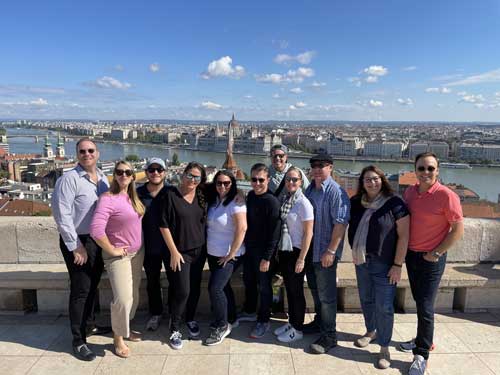
DAY 5 | MONDAY, SEPTEMBER 19
With a new framework of just the American experience, we began our fifth day with JDC. For more than a century, JDC has put Jewish values into action when the world needs it most. The Americans started today visiting the Mozaik Hub—a professional platform that provides infrastructure, co-working space, customized professional support, learning opportunities and financial support for Jewish community NGOs and initiatives in Hungary. Recognizing the plurality and the various questions and challenges today in the Jewish community, this program strives to share a vision of a more effective, cooperative and sustainable Jewish community in Budapest. The motto of Mozaik Hub is “If you have some power, your role is to empower others” and it was abundantly clear in the three presentations. Not only are these young, passionate, intelligent pioneers doing the work they care so deeply about, but they work with and volunteer for one another. They want each other to succeed. They are providing clothing to those in need, making Torah accessible to women, and teaching students in government schools about Jews. They are doing it in alternative and creative manners. They are inspiring to be around. You want to harness their energy for good and bring it back to America. We can model this type of creativity and entrepreneurship in our community. We have so much to learn from each of them. Following the presentations from members of the Hub, we participated in a workshop with Hungarian Jewish activists led by Haver members. Haver (meaning friend in both Hebrew and Hungarian) is an Informal Jewish Education Foundation that strives to tackle prejudice, Antisemitism, and intolerance in today’s Hungary. American Jews could lead theses workshops just as easily around this country to demystify so much misunderstanding in a simple, yet thoughtful manner.
We have much to learn from our Hungarian counterparts. Shortly after the morning, we arrived at the Budapest JCC Balint House, home of the Hungarian Jewish community. We were fortunate to partake in an exclusive briefing by Asher Ostrin, Senior Executive for International Affairs, JDC. A legend in his own right, he held a candid conversation just two weeks shy of his retirement from JDC. He shared personal stories of rescue and recovery as well as his hope for the future of Budapest. At the forefront of the future is Marcell Kenesei, JCC Director, who planned a speed dating exercise for each of us to hear about the vibrant Jewish community in Budapest and experience some of the JCC programs: Hora dancing with All Heart group, working on art projects with Ukrainian Roma refugee kids, or joining our elderly club’s activity. The language barrier was non-existent. It was evident from the expressions on the children’s faces what happened here at the JCC. They felt loved and supported. They found moments of happiness during a period of extreme turmoil in their lives. Visiting with beneficiaries of these programs gave each of us the unique perspective of how easily life can change and what would be necessary to live Jewishly in a new country. As our day began to wind down, over dinner, we had the opportunity to get to know the members of the Mozaik in a smaller setting. We learned their personal stories and their why. They also learned our reason for coming to Budapest. Our partners around the world are doing work that we can learn from and being with them only inspired the need for continuing our conversation and creativity, which will link our shared peoplehood for years to come.
spce
DAY 6 | TUESDAY, SEPTEMBER 20
This morning we explored City Park, Budapest’s “Central Park” and on Andrassy Avenue, the “Champs Elysees” of Budapest, where for two hundred years, Hungary’s most prominent families have lived. To give a little historical content; the boulevard was renamed three times in the 1950s; a testament to the rapid political changes of the period. It became Sztálin út (“Stalin Street”) in 1950 during the Soviet occupation. During the 1956 uprising, it was renamed to Magyar Ifjúság útja (“Avenue of Hungarian Youth”). The following year, the governing communists changed the name to Népköztársaság út (“People’s Republic Street”). The former name of Andrassy was restored in 1990, after the end of the communist era. This area is indicative of the realities of Budapest and the complexity of life there under changing political control. There was something unsettling about this portion of the morning. Seeing buildings once owned by the Jewish community and now overtaken by stores that we see in our local mall didn’t quite sit right. In a few blocks where art once thrived at the Opera, ballet, exhibition halls and fine architecture was now commercialized. The history was wiped clean, much like other parts of the city and throughout Europe. It was a fitting way to start to the day. We proceeded to enter the House of Terror Museum.
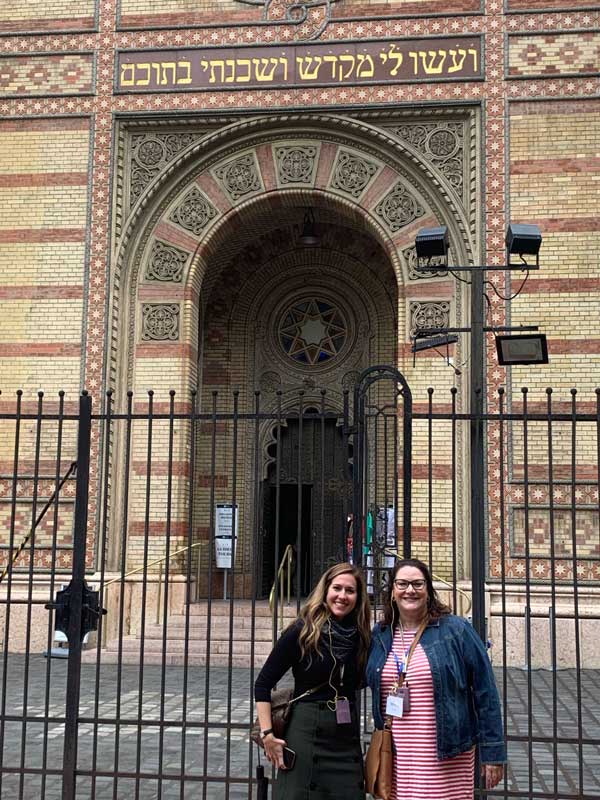 This museum contains exhibits related to the fascist and communist regimes in 20th-century Hungary. It stands as a memorial to the victims of these regimes, including those detained, interrogated, tortured or killed in the building. The building was used by the Arrow Cross Party and the museum was set up under the government of Viktor Orbán. Inside the building, the Museum has a T-54 tank on display. It is the first artifact you see upon entering the exhibition. It was a fascinating moment in history to walk into a museum and see a soviet tank. Earlier that morning, I was watching those same tanks enter Ukraine on the news. It was a jolting moment. The permanent exhibition contains artifacts, language and models regarding both communism and fascism. Walking through the space with only Hungarian on the walls, seeing pristine uniforms of both Nazi and Soviet soldiers around a dinner table was nothing many had seen before. The exhibition contains material on the nation’s relationships to Nazi Germany and the Soviet Union in a manner that can be interpreted in vastly different ways based on the perspective in which you see the exhibit. The museum is clearly created for Hungarians to alter their narrative of historical fact. It also contains exhibits related to Hungarian organizations such as the fascist Arrow Cross Party and the communist ÁVH (which was similar to the Soviet Union KGB secret police). Part of the exhibition takes visitors to the basement in an elevator where you’ll see examples of the cells that the ÁVH used to break the will of their prisoners. You are watching terror while being psychologically terrorized. This museum isn’t without controversy. Some historians, journalists, and political scientists have argued that the museum portrays Hungary too much as the victim of foreign occupiers and does not recognize enough the contribution that Hungarians themselves made to the regimes in question as well. Criticism has also been raised that far more space is given to the terror of the communist regime than the fascist one. The museologists of the House of Terror Museum reminded critics that the Hungarian Holocaust has its own museum, so there is no need to repeat its content. This museum is worth visiting in order to understand the vast complexities of Budapest. It was uncomfortable for a variety of reasons and each individual interpreted the content differently.
This museum contains exhibits related to the fascist and communist regimes in 20th-century Hungary. It stands as a memorial to the victims of these regimes, including those detained, interrogated, tortured or killed in the building. The building was used by the Arrow Cross Party and the museum was set up under the government of Viktor Orbán. Inside the building, the Museum has a T-54 tank on display. It is the first artifact you see upon entering the exhibition. It was a fascinating moment in history to walk into a museum and see a soviet tank. Earlier that morning, I was watching those same tanks enter Ukraine on the news. It was a jolting moment. The permanent exhibition contains artifacts, language and models regarding both communism and fascism. Walking through the space with only Hungarian on the walls, seeing pristine uniforms of both Nazi and Soviet soldiers around a dinner table was nothing many had seen before. The exhibition contains material on the nation’s relationships to Nazi Germany and the Soviet Union in a manner that can be interpreted in vastly different ways based on the perspective in which you see the exhibit. The museum is clearly created for Hungarians to alter their narrative of historical fact. It also contains exhibits related to Hungarian organizations such as the fascist Arrow Cross Party and the communist ÁVH (which was similar to the Soviet Union KGB secret police). Part of the exhibition takes visitors to the basement in an elevator where you’ll see examples of the cells that the ÁVH used to break the will of their prisoners. You are watching terror while being psychologically terrorized. This museum isn’t without controversy. Some historians, journalists, and political scientists have argued that the museum portrays Hungary too much as the victim of foreign occupiers and does not recognize enough the contribution that Hungarians themselves made to the regimes in question as well. Criticism has also been raised that far more space is given to the terror of the communist regime than the fascist one. The museologists of the House of Terror Museum reminded critics that the Hungarian Holocaust has its own museum, so there is no need to repeat its content. This museum is worth visiting in order to understand the vast complexities of Budapest. It was uncomfortable for a variety of reasons and each individual interpreted the content differently.
After the self-guided tour at the House of Terror Museum, understanding the political climate in Hungarian politics in 2022 was important. We met with Gabor Gyori–Senior Analyst at Policy Solutions for an in-depth conversation surrounding politics in today’s world and the impact on the future of the Hungarian government. After a morning of heavy conversation, it was time to learn about some of the exports from Hungry and tour the Hungarian Etyk Winery with wine tasting. The Etyk Wine country was once own by Jewish families. It became abundantly clear that whether we were in deep conversation or seeing the countryside; Jewish life was vastly altered and not regenerated in the same way post 1945.
spce
DAY 7 | WEDNESDAY, SEPTEMBER 21
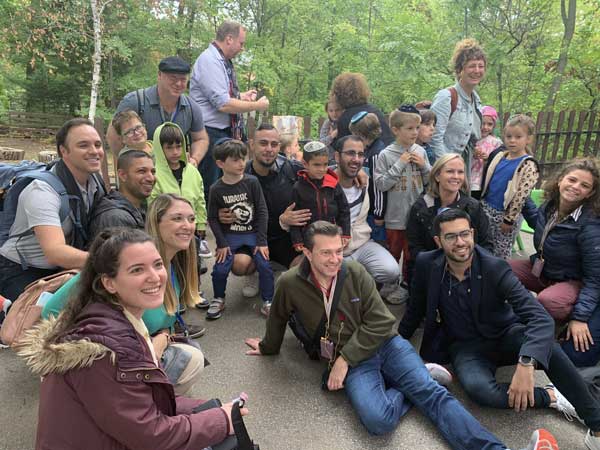 Throughout the seven days together, we focused on several discussions and topics. This was the final day of the mission. It was a moment in which we needed to tie our time together, reflect and conceptualize what comes next as leaders serving in Jewish Palm Beach. To simplify the categories, we explored: politics/history, Jewish Religious Life, Jewish Cultural Life, Antisemitism, and asked everyone to articulate their six words about their time in Budapest. Each were asked to write comments, draw images, jot down key phrases of importance on these topics. After every individual had the opportunity to explore these, struggle with their unanswered questions, and express their reflections; we then gave the prompt to make these pages a living piece of Torah and comment on one another’s words. This is when they pushed the limits of expression. In Judaism, we question. Our Talmud, by insisting we question, allows us to doubt. When there is doubt there is discomfort. In discomfort there is growth. Our goal was to provide a platform for growth. At the end of the exercise, themes from participants included trauma to hope, coming so far with so far to go, and ideas around democracy for the Hungarian Jewish community. These leaders came with questions and might have left with many more as they explore their own journey of leadership while understanding Judaism in a separate, but now united, part of our Jewish world. This first mission of its kind was barely the beginning. It wasn’t the starting point of a relationship with Budapest. It was an introduction with layers to still be explored. We turned Jewish concepts upside down for these Americans. We pushed them to look at their own Judaism differently. If we ignited one flame, one new relationship with a Hungarian Jew, one individual who is deeply concerned and passionate about the people in our newest sister city, then it’s just the beginning and a success. Seeing these young leaders transform over a matter of days was inspiring. The Palm Beach Jewish community is incredibly fortunate to have dedicated Jews who want to move our local community forward while also being engaged with our global community in an intentional way.
Throughout the seven days together, we focused on several discussions and topics. This was the final day of the mission. It was a moment in which we needed to tie our time together, reflect and conceptualize what comes next as leaders serving in Jewish Palm Beach. To simplify the categories, we explored: politics/history, Jewish Religious Life, Jewish Cultural Life, Antisemitism, and asked everyone to articulate their six words about their time in Budapest. Each were asked to write comments, draw images, jot down key phrases of importance on these topics. After every individual had the opportunity to explore these, struggle with their unanswered questions, and express their reflections; we then gave the prompt to make these pages a living piece of Torah and comment on one another’s words. This is when they pushed the limits of expression. In Judaism, we question. Our Talmud, by insisting we question, allows us to doubt. When there is doubt there is discomfort. In discomfort there is growth. Our goal was to provide a platform for growth. At the end of the exercise, themes from participants included trauma to hope, coming so far with so far to go, and ideas around democracy for the Hungarian Jewish community. These leaders came with questions and might have left with many more as they explore their own journey of leadership while understanding Judaism in a separate, but now united, part of our Jewish world. This first mission of its kind was barely the beginning. It wasn’t the starting point of a relationship with Budapest. It was an introduction with layers to still be explored. We turned Jewish concepts upside down for these Americans. We pushed them to look at their own Judaism differently. If we ignited one flame, one new relationship with a Hungarian Jew, one individual who is deeply concerned and passionate about the people in our newest sister city, then it’s just the beginning and a success. Seeing these young leaders transform over a matter of days was inspiring. The Palm Beach Jewish community is incredibly fortunate to have dedicated Jews who want to move our local community forward while also being engaged with our global community in an intentional way.
You can see many of the Budapest mission photos on Federation’s Facebook page here.
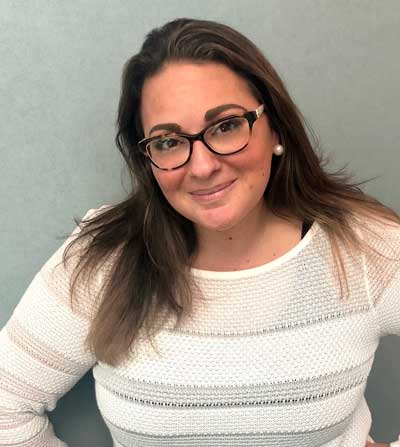
Lindsay Hirsch, Senior Director, Leadership Development

